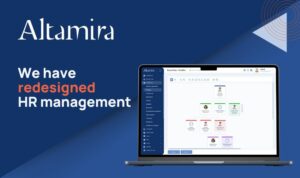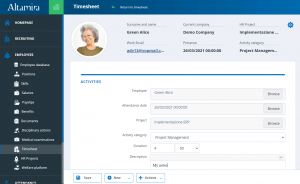When a company’s position remains vacant, the first action is often to look for an external candidate.
The next step would be to write and publish a vacancy, trying to make it stand out among the many similar job offers that crowd the web.
To increase the chances of finding the right candidate, HR personnel can take advantage of the company’s ATS multiposting feature, as it allows them to publish vacancies on all the leading job portals, purchase sponsorship services from companies such as Indeed, InfoJobs, and LinkedIn, or contact external recruitment agencies.
However, there is another valuable talent source that is often overlooked, and that is internal resources.
It is realistic and expected for employees to seek more senior or managerial positions, or to look for a decisive shift in duties that would allow them to develop new skills.
To take full advantage of this invaluable pool of candidates, companies need to implement an internal job posting program.
Back then, internal recruitment was limited to highlighting new job opportunities on the company notice board, usually located at the office’s entrance or in common rooms.
This approach, long considered archaic and impractical, has been made entirely outdated by the spread of hybrid work.
Today, most companies can opt for a virtual bulletin board on the employee portal, a dedicated section on the company’s career site, an internal newsletter, or all the above.
The pros of internal job posting
Allowing employees to apply for an open position has many benefits.
Time and money
By allowing internal staff to fill a vacant position, companies can avoid many of the costs commonly associated with the traditional search and selection process.
It will no longer be necessary to publish vacancies on job boards, share them across social networks, purchase sponsorship services, contact recruitment agencies, etc.
The selection phase will also be shorter and more cost-effective, requiring fewer interviews and no background checks for the potential candidates.
This is not to say that interviews will no longer be necessary. Although we may believe a candidate to be the right person for a job based on his experience with the company, it’s still important to explore the candidates’ motivation, expectations for the new role, proposed initiatives, etc.
Finally, the salary awarded to internal recruits is usually lower than that negotiated with external candidates.
Cultural fit
Understanding whether an external candidate is compatible with the existing corporate culture and values is not an easy task for recruiters. Even fully qualified new hires could find it difficult to fit within the company culture, leading to resignation or performances below expectations.
This issue does not apply to internal candidates, who have been part of the organization for some time and are fully aware of its mechanisms.
That being said, micro-environments can exist within the same company, and the same set of values and processes can vary between departments. It is thus advisable to investigate whether the role change has the potential to create unexpected friction.
Attraction, Engagement, and Retention
A company that focuses heavily on internal promotions holds a very powerful tool, not only to engage and retain its staff, but also to attract new talent.
The existence of consolidated and effective career paths is a highly desirable quality for candidates, especially among the youngest and most ambitious.
When commitment to the company is rewarded with professional growth, employees are motivated to give their best performance and discouraged from looking elsewhere.
Internal promotions also minimize the onboarding and training required to make employees independent in their new roles.
The cons of internal job posting
Compared to external recruitment, internal job posting still has some limitations and disadvantages.
Negative repercussions on the organizational climate
An internal promotion will inevitably create competition between employees, and not all may willingly accept the final decision.
Some may feel victimized and complain of preferential treatment or favoritism, undermining the stability of a team or an entire department.
These kinds of outcomes are difficult to avoid and predict but can be minimized with a transparent and objective selection process based on objective data, if possible supported by technology.
Stagnation of ideas
Hiring externally has the advantage of bringing in new ideas, perspectives, and practices.
Relying entirely on internal mobility creates the risk of crystalizing outdated and faulty processes, hindering the company’s productivity in the long run.
Therefore, companies should implement a hybrid search and selection method to take advantage of both routes and limit their weaknesses.
Gaps in the organization
When an employee is promoted or changes role, the position left open will call for a new job search that will inevitably require time and money to be filled.
However, these are generally junior positions that involve faster and less expensive recruitment processes.
| External job posting | Internal job posting |
|---|---|
| Pros | |
| Wider talent pool | Cost-effective |
| Injection of new ideas and processes | Promotes retention |
| No existing positions are left unfilled | Certainty of cultural fit |
| Faster onboarding | |
| Cons | |
| Expensive | Risk of upsetting the organizational climate |
| Longer timeline | Stagnation of ideas |
| Uncertain cultural fit | Previous position needs recruitment |
The KPIs for internal recruitment
Based on what has been said so far, it is clear that an efficient internal job posting program can have a positive impact on a number of KPIs relevant to HR:
- Time to hire. The days elapsed from the job posting date to the chosen candidate’s hiring.
- Cost per hire. The total expenses incurred in finding the right talent.
- Voluntary turnover rate. The percentage of employees who voluntarily resigned during the year.
- Internal promotion rate. It’s calculated by dividing the number of people promoted by the total number of employees, and it’s a helpful indicator of the ability to create internal career paths and encourage retention.
How to write an internal job ad
The web is packed with articles on how to write a good job description, but what if the vacancy is only directed to existing employees?
As a rule of thumb, the external recruitment guidelines also apply to internal job postings.
The main difference is that there is no need to include a description of the company or the company culture.
Internal job posting by sector
Companies across all sectors can successfully resort to internal recruitment.
In our experience, however, the companies that benefit the most from internal job posting are those that operate in retail and large-scale distribution.
The large number of available positions and the continuous opening of new offices promote the implementation of internal mobility.
Internal job posting thus becomes an invaluable tool to offer employees the best positions for their needs and skills.
ATS and internal job posting
As anticipated in the first part of this article, applicant tracking systems make the search for external candidates more effective thanks to multiposting features.
Many ATS like Altamira Recruiting also support internal job posting, allowing recruiters to leverage all of its tools for internal recruitment as well.
Vacancies can be published with a click on a specific section of the career site, making it easily accessible to employees. From here, internal candidates can submit applications using a customized template that further simplifies the process.
The employee profiles will be automatically added to the ATS digital database, and the selection will be quick and accurate thanks to the advanced search and screening tools.
The selection workflow is also customizable for internal job posting, for example, by reducing the expected number of interviews or deleting the background check phase.
Advanced ATS, such as Altamira Recruiting, also allow recruiters to create a selection of both external and internal candidates, allowing for a fair comparison based on merits and skills.
The advantages of a complete HR platform
The advantages of using a complete HR platform are even more apparent when it comes to internal job posting, as it provide HR managers with a complete set of information regarding the employee, allowing for a thorough evaluation before a promotion or a role change.
Internal recruiters will be able to evaluate the employees’ performances through annual assessments, their skill development over the years, the participation rate in courses and the results achieved during exams, the absenteeism rate, eventual disciplinary measures, and so on.
Altamira HRM includes two additional features that further improve the internal recruitment process:
- The opportunity for managers to request the opening of a job search – both internal and external – directly from the platform (the so-called job requisition).
- The ability to open a job search directly within the organizational chart.
Copyright: ©nadia_snopek/Adobe Stock




























































































